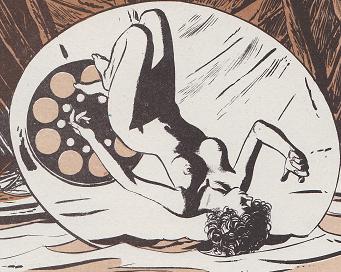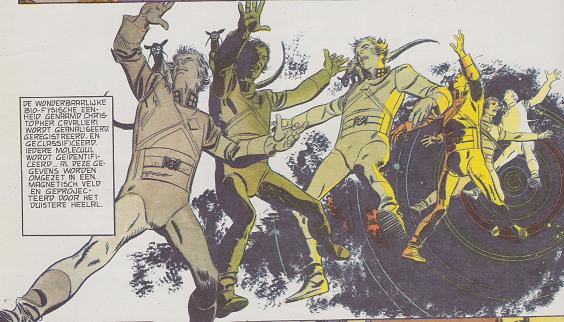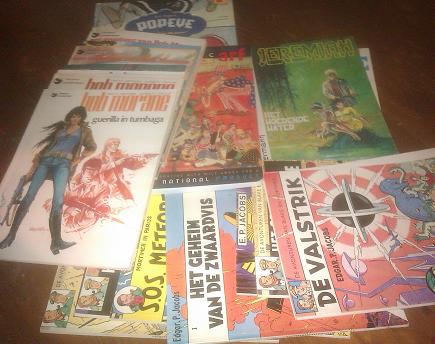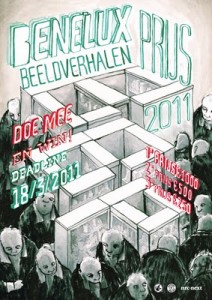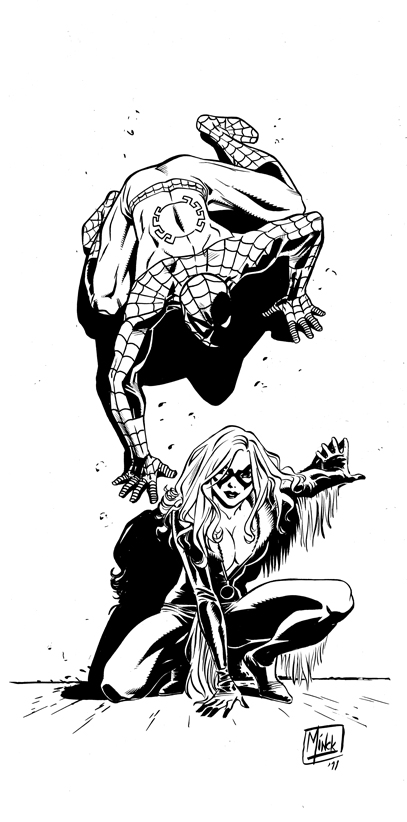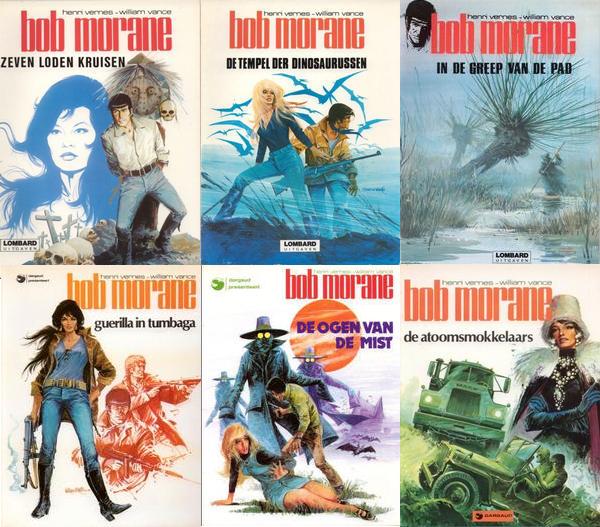
Bob Morane is a Belgian pulp series created and written by Henri Vernes, first published in 1953 with some 200 novels appearing since. Rather popular in the French speaking world, it has recieved the obligatory movie and television treatments, including a recentish animation series, as well as a comics adaptation that has run for almost as long as the original series, with the first installment having been published in 1959. Interestingly, the comics were written by Vernes himself, with a number of artists as collaborators, the best of which was William Vance, now best known for his work on XIII. Some of his cover work for the series is shown above. I love the pulp look of them, which could’ve just as well be used on the original books.
The content of these comics matches the covers: pure pulp in the best possible way. Bob Morane and his heterosexual life partner Bill Ballantine get into all sorts of scrapes, working in the traditional adventuring profession of journalist, though for the most part Morane’s job is only an excuse for him to be somewhere exotic. Usually there’s some woman for Morane to flirt with, be they damsel in distress, an opponent or villain, or a fellow adventurier like Sophia Paramount. Most stories stand on their own, though there is a rough sort of continuity with various villains returning several times, especially L’Ombre Jaune, Morane’s arch enemy. Every sort of pop cultural obsession sooner or later found its way into Bob Morane plots, so where you’d have something relatively restrained as Bob and co fighting the mob or getting caught up in a revolution in a fictional Central American country in one album, the next could see them going on a dinosaur or flying saucer hunt, or getting caught up in the schemes of one of various criminal masterminds and mad scientists littering the series, or even traveling through time saving the world from L’Ombre Jaune’s latest scheme.
None of it is any great shakes as literature, or even rising to the level of a top flight adventure series like Bernard Prince or even Bruno Brazil, but as light entertainment they do well. Especially with Vance drawing, who always brings a bit of extra class to even the most formulaic of adventure series. And Bob Morane inspired perhaps the greatest French New Wave pop song; Indochine’s L’Aventurier:
